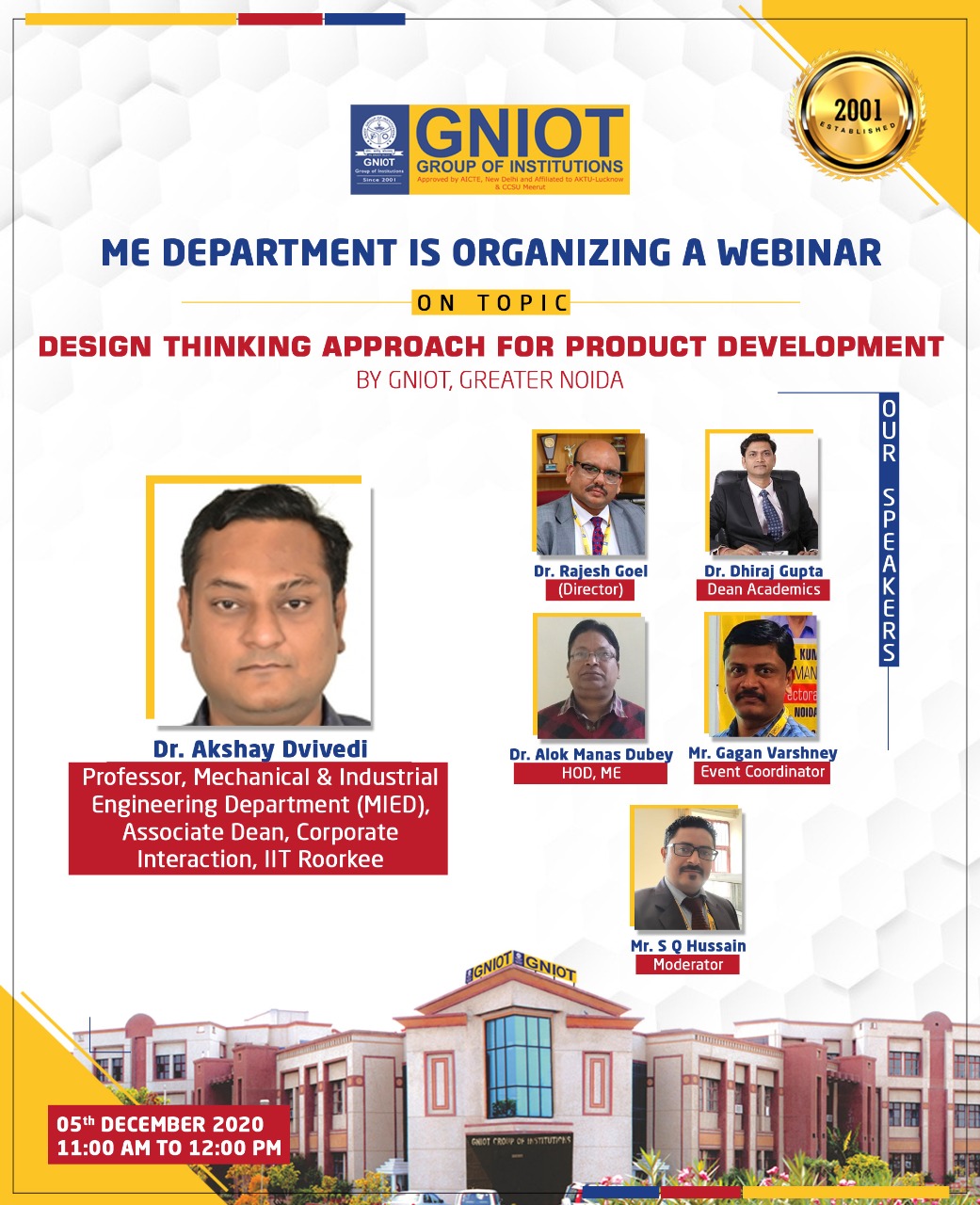Query / Suggestions /Grievance
Mail Us at
[email protected]
Saturday
Venue:- GNIOT Campus
Time:- 10:00 AM
5 December 2020
GNIOT, Greater Noida
https://docs.google.com/forms/d/1a0e9ybnaYM5kAvioIpAZO3F24n708qOr081IHoaNXhU/edit
Department of Mechanical Engineering, GNIOT GROUP OF INSTITUTIONS, GREATER NOIDA, is organizing a Webinar on “Design Thinking Approach for Product Development” on 5th December, 2020 between 11:00 AM to 12:00 PM.
Statement- Product development is a series of steps that includes the conceptualization, design, development and marketing of newly created or newly rebranded goods or services. Product development refers to all of the stages involved in bringing a product from concept or idea through market release and beyond. In other words, product development incorporates a product’s entire journey.
Objective- The objective of product development is to cultivate, maintain and increase a company's market share by satisfying a consumer demand.
Role- There are many roles of product development manager as described below-
• Identifying a market need—Products solve problems. Identifying a problem that needs solving (or a better way of being solved) is where this journey should begin. Conversations with potential customers, surveys, and other user research activities can inform this step.
• Quantifying the opportunity—Not every problem is problematic enough to warrant a product-based solution. The pain it causes and the number of people or organizations it impacts can determine whether it’s a worthy problem to solve and if people are willing to pay for a solution (be it with money or their data).
• Conceptualizing the product—Some solutions may be obvious, while others may be less intuitive. Here’s where the team puts in the effort and applies their creativity to devising how a product might serve its needs.
• Validating the solution—Before too much time is spent prototyping and design, whether the proposed solution is viable should be tested. This can still happen at the conceptual level.
• Building the product roadmap—With a legitimate product concept in hand, product management can build out the product roadmap, identifying which themes and goals are central to develop first to solve the most significant pain points and spark adoption.
• Developing a minimum viable product (MVP)—This initial version of the product needs just enough functionality to be used by customers.
• Releasing the MVP to users—Experiments can be conducted to gauge interest, prioritize marketing channels and message, and begin testing the waters around price sensitivity and packaging.
• Ongoing iteration based on user feedback and strategic goals
Platform to be used: Online through Google Meet.
Event Coordinator: Mr. Gagan Varshney, Assistant Professor, Mechanical Department.


